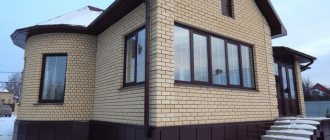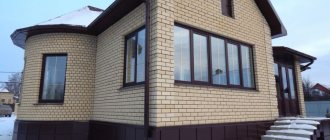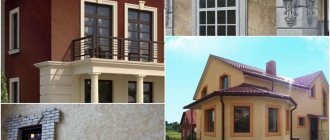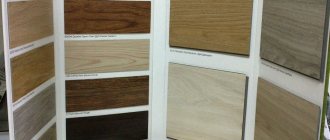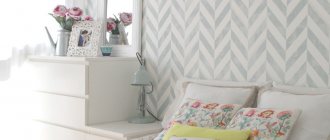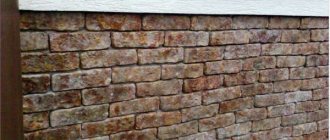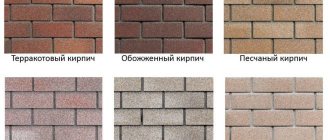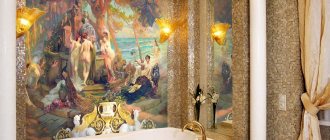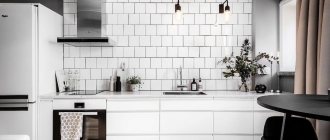Basic requirements for facade tiles
Buildings are exposed to many adverse effects from their facades - temperature changes, ultraviolet radiation, wind loads, high humidity, and mechanical damage. Therefore, all finishing materials have special requirements:
- mechanical strength;
- resistance to moisture;
- resistance to UV radiation;
- fire safety;
- resistance to chemical influences;
- frost resistance;
- durability;
- ease of care.
In addition, any facade facing tile must comply with environmental standards and also have a beautiful design. The cost of such products varies greatly - from budget to very expensive materials.
Types of facade tiles
There are many options for tiles for finishing facades made from natural and artificial materials. The best tiles for the facade are selected based on color, texture, and properties.
You can combine 2 or several types of facing products, as well as combine them with other surfaces, for example, painted plaster.
A natural stone
The most expensive and prestigious materials for facade finishing. They have high strength, durability, and other performance characteristics. Because they are so heavy, they require reinforced foundations, strong wall surfaces or strong frames for installation.
Natural stone facade tiles for the home are:
- Granite. Of all natural facing materials, it is particularly durable and weather-resistant. The surface can be matte or polished glossy. Installation requires good professional training.
- Marble. It is distinguished by a variety of colors and natural patterns. Gives the façade a rich, luxurious look. Compared to granite, it is less resistant to weathering because it absorbs moisture due to its porous structure. Therefore, marble surfaces are treated with special protective compounds containing wax. Installation must be carried out by specialists.
- From shell rock. This is a special type of limestone with a porous structure. Shell rock is much cheaper than marble and granite and is widely used for finishing facades and interiors. The unusual texture of such tiles gives the walls freshness and originality. Due to its porosity, the material adheres well to the wall surface. For exterior finishing, you need to choose the densest type of shell rock - grade M35. It is better to carry out installation in warm, clear weather, but not in frost, rain, or heat. To reduce moisture absorption, the tiles are treated with special compounds.
- Made of sandstone. Inexpensive, environmentally friendly material of natural origin. It can be porous or denser. To decorate a house with sandstone facade tiles, you should choose only dense varieties - porous ones will deteriorate over time due to exposure to moisture and temperature changes.
Popular types of tiles
Ceramics for facades are distinguished by their diversity. And here not only the colors differ, but also the texture and size.
Terracotta tiles can be classified as the most common type of ceramics. It is made from kaolin clay and is not glazed after firing. Before firing, it is passed through an extruder - this makes the product more dense. The color scheme of “terracotta” will be determined by the composition of the initial mixture; no coloring pigments are added there. They produce structured and smooth terracotta. The first one is more popular, because it gives the impression of finishing with natural stone. They are produced both in the form of tiles and in the form of large facade panels up to 180 centimeters long. Installation is quite simple.
Clinker usually repeats the color scheme of the brick and its face side. Clinker tiles are made from shale clay, the composition is selected especially carefully. The material is produced without glaze; clinker can imitate different stone surfaces. Structured, polished, and glazed are available, but the latter option is practically not used for facades. Sizes vary .
The “hog” has an unusual structure. This material differs little in composition from terracotta, but it is made by firing it twice and covering it with glaze. It follows the shape of a brick and even includes through longitudinal holes. Before laying, the product is hit on the end with a hammer to break it into two halves with beveled edges. The product is covered with enamel, so the color can be very diverse. This development was originally planned for the Art Nouveau style, so the shades can really be unexpected.
Porcelain tile can be called a unique type, which is durable, high density, and water resistant. Water absorption does not exceed 0.05%. This is a sustainable material that imitates natural stone. But you can give it some resemblance to a tree. The cladding is heavier, but it is stronger. The surface can be matte; this option is considered the most non-staining. But there are glossy or polished options , which are obtained by applying a glassy transparent glaze or direct polishing of the material.
Structured or rustic is a broad category of material that imitates a wide range of wood or unpolished stone. The low porosity and strength of the material make it possible not to worry about the smoothness of the surface. The effects can be very different: aged brick, crushed stone, rubble stone. And photo printing can be considered an exotic processing method. The durable and smooth surface of ceramics is a good basis for drawing. The building, lined with beautiful panels with drawings, makes a lasting impression.
Agglomerate tiles
It is an artificial stone material obtained from crumbs of spar, granite, quartz, expanded clay with the addition of binders. The mixture is pressed under high temperatures.
In some performance characteristics it surpasses even natural stone. And the cost is much cheaper. Therefore, it is very popular for finishing facades.
A wide variety of design options are available for finishing a house with agglomerate facade tiles. Surfaces come with imitation of various materials, a wide choice of colors. Most often, agglomerate tiles are used to create suspended, ventilated facades.
Note!
Epoxy grout for tiles: pros and cons, scope, varieties, how to work with it (instructions + photos)
Do-it-yourself tile shower tray step by step: instructions, dimensions, design, installation of communications, types of structures, photos
White tiles in the bathroom: 170 photos of the best ideas and new tile designs. Layout schemes and beautiful combinations
Types of facade facing tiles
External facade tiles are divided into several varieties, depending on the material from which it is made, as well as its characteristics. We will consider the following options:
- Porcelain stoneware.
- Concrete.
- Clinker room.
- Ceramic tiles are common for outdoor use.
- Agglomerate.
- Terracotta.
Porcelain tiles
Exterior products, the main component of which is granite chips. Additional components: spar, quartz, expanded clay and binding additives. All components are mixed and fired at high temperatures. The next stage is pressing. The output is a solid, monolithic plinth tile.
This is the best alternative to products made from natural stone, which have a high cost. In some respects, outdoor porcelain stoneware products are even superior to natural stone. This is especially true for price.
Features of the material for outdoor use:
- It is produced in different shapes, usually it is a square, the size of the products is large. The length of the edge can be from 50 to 90 cm. Thanks to its large size, products for external use can be quickly and conveniently sheathed on buildings.
- Laying of facade tiles is carried out not on a mortar, but on a lathing with additional insulation of the facade or directly on the wall using glue. Porcelain stoneware is also used for finishing wooden facades.
- It has a varied texture. The most popular are glossy surface and rough stone-like surface.
- Its characteristics resemble natural stone, but it has an affordable price.
Due to the characteristics of these external products, they are used to create a suspended ventilated façade.
Concrete tiles
An economical option for exterior decoration. The material consists of quartz sand, admixtures to reduce weight, and additives that increase strength properties and moisture resistance. The adhesive is Portland cement.
The advantages of external concrete slabs include:
- Easy to install and lightweight products.
- The surface of products for outdoor use is treated with a hermetic mixture that increases the ability to repel moisture.
- Used in the case of restoration of cultural and historical buildings, obsolete buildings.
- Nice looking exterior cladding. At the tile production stage, colored pigments are added to the mixture. They paint the finished product in different shades.
At the final stage of installing concrete products on the wall, an additional sealing layer is applied. The procedure should be performed regularly, 2 to 3 times a year.
Concrete exterior tiles for the basement also have several disadvantages:
- the composition contains quartz sand, which means that the wet installation method is difficult to perform, especially when working with large slabs;
- low frost resistance. For the northern regions, it is better to give preference to other analogues with better performance;
- low quality geometry. Concrete tiles have bumps and rough edges, so you have to constantly trim them before laying.
Clinker tiles
This is a type of outdoor ceramic, only it is improved and made specifically for outdoor use. The clay from which the material is made takes a long time to burn during the manufacturing process, practically melting. The result is a durable and moisture-resistant material with high wear resistance.
Such brick-like facade tiles have many advantages:
- High frost resistance. The outer material can withstand temperature changes up to 70 ℃. Frost resistance – 50 cycles or more, depending on the manufacturer. Ideal for regions with harsh winters.
- Moisture resistant. It is due to the high density of the material. Clinker has no pores, so moisture does not penetrate inside and does not spoil it from the inside. Hygroscopicity no more than 3%.
- High strength. Thanks to special processing at elevated temperatures, a layer of melted clay is created on the surface. It protects the material from damage, is durable and has good scratch resistance.
- Not afraid of the influence of ultraviolet rays. Clinker does not fade and retains its original properties.
- Easy to install. Brick-like facade tiles have ideal sides and geometry. The material does not need to be further processed or polished.
Disadvantages of external clinker:
- with strong point impact there is a risk of splitting;
- high cost due to the labor-intensive manufacturing process. Regular tiles for exterior finishing will cost less.
Ceramic tile
A familiar material known for its characteristics. Often used for interior decoration, but there are products for exterior use. Its production technology is identical to the creation of bricks. The only difference is in the thickness of the material, respectively the weight and installation technology.
Brick-like facade tiles have a reasonable price and a wide range. It resists moisture, scratches and other negative factors well. True, its strength qualities are not so good.
Agglomerate
A modified material obtained by pressing marble chips, granite and quartzites, with the addition of pigment and a binder. These are 100% natural materials that not only look beautiful and noble, but are also durable and reliable. Facades are often faced with granite or marble, emphasizing the status of the owner.
Advantages of agglomerate:
- The highest strength indicators and frost resistance.
- Beautiful appearance, imitating natural stone. The decoration of the facade is unique and noble.
- No harmful substances in the composition.
- Not afraid of chemical influences and salts.
- Long period of operation of high quality outdoor products, which is more than 100 years.
Agglomerate products for the plinth have two disadvantages. The first is high cost. The second is the complexity of installation work.
Terracotta tiles
Subspecies of ceramic products. Another name is architectural ceramics. It is unglazed, made from kaolin clay by firing. The composition does not contain chemical dyes. A rich assortment of colors is obtained due to production technology, by adding different clay rocks.
The color palette is varied, ranging from light beige to dark brown. The slabs themselves can be solid or hollow.
Advantages:
- Long service life.
- High resistance to temperature changes.
- Low cost.
- Ecological cleanliness.
- Good strength and water resistance.
- Convenient and simple installation.
- Great appearance.
Water absorption rates up to 6%, dimensions: length from 40 to 200 cm, height from 10 to 80 cm with thickness from 1 to 6 cm.
Ceramic tile
This type of tile is not much different from the usual one used for interior decoration. But the main thing is that ceramic tiles for external walls must be frost-resistant, otherwise they will quickly crack in the first winter season.
Unlike interior varieties, ceramic facade tiles do not have such a variety of decor. These are mostly plain, dim products, imitating brick or stone.
Construction of a ventilated façade using ceramic tiles
The ventilated facade with ceramic cladding is designed in such a way that a comfortable indoor environment is ensured due to the movement of air flows in the space between the wall and the cladding.
In addition, reliable protection of the walls of the structure from external influences is provided, and when installing insulation in the facade structure, effective insulation of the room from the outside is ensured.
The main feature of a ventilated facade is the creation of a gap between the wall and the cladding or insulation and the cladding layer. A ventilation gap is a prerequisite for a ventilated façade.
IMPORTANT!
Ceramic cladding provides fairly reliable protection from external influences, while at the same time maintaining the ability to prevent condensation inside the suspended structure.
The ventilated facade under ceramic tiles must be designed in such a way as to ensure a normal microclimate inside the façade structure, regardless of whether there is insulation inside, or whether the suspended ceramic façade is equipped without an insulation system.
Porcelain tiles
It is similar to ceramic, only it has higher strength, wear resistance and other performance characteristics. The appearance resembles natural stone.
The composition includes white clay with an admixture of kaolin, quartz, spar, and various additives. Obtained by pressing under high pressure and temperature. Facade tiles are made to look like brick or other materials.
Clinker tiles
Clinker façade tiles are made like ceramic tiles from clay, only they contain the slate variety with various additives.
Note!
Italian tiles for floors and walls: photos of beautiful tile designs in the bathroom and kitchen. Choosing tile color, style and size
Marble tiles for the bathroom: TOP-200 photos of original design, ideas for mixing and matching
Do-it-yourself tile shower step by step: instructions, algorithm of actions, dimensions, layout diagrams, photo of a shower with and without a tray
Formed under high pressure from a clay mass, the tiles are fired at high temperatures. The result is a beautiful finishing material that has high resistance to cracking, moisture resistance, and frost resistance.
Facade clinker tiles for brick
It is difficult to find the same high-quality and inexpensive modern material as clinker tiles. No plasticizers or artificial dyes are used in production. The main raw material is plastic clay. Facade clinker tiles simply have a huge number of advantages.
Advantages of facade clinker tiles:
- Light weight reduces the load on supporting structures.
- The glossy surface does not actually wear out.
- Good adhesive properties allow you to decorate different bases - brick, concrete, foam concrete.
- The tiles can be laid equally successfully on vertical or horizontal planes; they can be used to fill in recesses or cover protruding parts and non-standard objects.
- The density of the structure does not allow dust and dirt to linger. There is virtually no cleaning or maintenance required.
- Large areas or small areas can be tiled evenly with guaranteed durability.
- High vapor permeability values required for a ventilated façade.
- Resistance to severe frosts. Exceptionally low level of water absorption at any atmospheric humidity.
- Not susceptible to prolonged exposure to aggressive chemical environments or sunlight.
- Completely hygienic. Microorganisms, fungi, and mold cannot multiply on the tile surface. No additional antimicrobial treatment is required.
- Durability, reliability, quality factor are unrivaled.
- Absolutely environmentally friendly, in terms of production and consumption.
- Harmonizes with all natural or artificial building materials. Combines with glass, metal, plastic, stone or wood surroundings.
Concrete tiles
It is obtained by pouring concrete into molds. Cheap available material, large selection of textures and colors. It is quite massive, so you need a solid foundation and strong wall surfaces.
To reduce weight, porous fillers are often added to mixtures. The technology for producing tiles is simple, accessible for self-production.
But it is not recommended to make homemade tiles for wall decoration - factory-made products are of higher quality. Installation is simple, accessible even to beginners. Performance characteristics are average.
Polymer sand tiles
They are made from sand, polymers, dyes, and various additives. The mixture is poured into molds and under the influence of high pressure and temperature it becomes very strong. light weight tiles.
It is resistant to moisture, acidic environments, frost-resistant, and is easy to clean from dirt. Refers to the cheapest types of tiles.
Note!
Mosaic from broken tiles: step-by-step instructions on how to lay it out with your own hands (140 photo ideas)
Mosaic for the bathroom: TOP-150 photos of new designs, as well as modern ideas for combining mosaic tiles
Do-it-yourself water heated floor under tiles step by step: installation instructions with photos and descriptions, installation and connection
Facade ceramic tiles of various colors - creative decor for the facade of a house
Exterior facing tiles in different colors will be a pleasant discovery for lovers of creativity and an innovative approach to design. This concept will not only look cheerful in gray weather, but will also make the buildings stand out from the rest.
It’s nice to walk down the street and see such a “miracle” that gives aesthetic pleasure. The best example is this photo, where tiles in wood tones are combined with tiles in light and faded colors. It is important not to overload the facade with many shades, but only to “defuse” the composition.
Stone-like façade tiles or full-fledged natural stone are perfectly combined with wooden lintels. One part of the house can be covered with one facade material, and the second can be visually separated with a natural wooden theme.
Such designer classics will never cease to give bright feelings. The facade of white and cream shades visually refreshes the building and looks light, which is especially important in seasons with fewer sunny days. Country style, Provence accepts the use of wood, so this is a real find for true connoisseurs of French chic.
Would you like to live somewhere in California, Miami or on the Mediterranean coast? To do this, you don’t have to move to another country - recreate the culture of the south, eternal summer, and Italian villa in your home! The facade, covered with light, warm plaster in combination with a round stone of a “dirty” shade, will resemble a country residence in the Hollywood Hills or the hacienda of an Italian family. Mediterranean, southern chic always looks a win-win!
To create visual space, the facade is highlighted with panoramic windows surrounded by stonework, which emphasizes the connection with the landscape
Visually the roof becomes larger and thanks to this the house acquires greater scope. Brickwork under the tiles looks original and stylish, especially when the roof of a two-story house smoothly transitions to the first tier.
As with multi-colored tiles, such a design solution will give a charge of color pleasure and make the appearance of the building not boring. When choosing a brick, it is better to focus on more classic shades - black, gray, brown, brown, sand. It is optimal to choose muted shades if you plan to construct the façade in non-light colors.
This style came to us from Scandinavia, where the theme of forest and wild nature is promoted in all design solutions. Muted wood tones and green shades of plaster work best together. They evoke an atmosphere of forest thicket, tranquility, unity with nature.
The German style appealed not only to the Germans themselves, especially in the Bavaria region, but also to Turkey, Italy, Sweden, as well as our compatriots. The German style looks especially colorful and fills it with the romance of medieval Europe. It is best not to deviate from the classic style and consider the facade using dark wooden beams (gray, black, brown) against a background of light (white, cream, peach) plaster.
Brickwork or brick-like tiles of regular geometric shape in cool, light shades are ideally combined with a roof with warm-colored tiles. The building acquires lightness and gives a mood of comfort.
Black and white are timeless classics that cannot live without each other. To prevent the façade of the house from being boring and reminiscent of an office in the city center, it is worth adding wooden lintels.
The style of constructivism, meaning “massive, brutal, strict,” smoothly moved from industry to the construction of residential complexes. This style is less often used for a single-family home, and is more often considered in the construction of residential complexes. This facade format is impossible not to respect, thanks to its restraint, strict geometric shapes and minimalism, which is difficult not to talk about today
Today it is not fashionable and very boring to plan a house with a wooden facade a la “house on chicken legs” or “sauna made of a round wooden frame.” The house in a modern concept combines different trends, where even, smooth wooden blocks are complemented by relief, thin wooden slats. The photo shows the idea in its optimal form.
Please note that an excess of iron in the design of the facade of a building is allowed only if the area around is planted with greenery or there is a picturesque view nearby, as here on the river. If a house with a metal facade is surrounded by gray buildings, the result will not be so stunning.
The use of polymer in building cladding deserves equal attention from a design point of view. Plastic sheets can have a glossy or matte surface, so they are a full-fledged alternative to tiles and concrete. This facade material is resistant to moisture and impact, does not require maintenance, and can be cleaned without difficulty.
If you value space, light and minimalist style, listen to our advice. This concept seems to unite the house with the surrounding space. It is important that the roof be as flat as possible or, as in this photo, completely absent, and its role is played by a straight plane. White color loves straight geometric shapes and maximum area.
Terracotta tiles
Made from fired kaolin clay without applying glaze. Completely natural material without chemical additives or dyes. Different shades are obtained by mixing different types of clay. The range of colors ranges from light beige to dark brown.
Terracotta tiles are resistant to low and high temperatures, durable, and easy to install. This cheap material is not inferior in attractiveness to more expensive products.
Flexible bitumen tiles
It belongs to economy class materials, but has a very attractive appearance and good performance characteristics.
The composition of such flexible facade tiles is identical to bituminous shingles. Its base consists of fiberglass and improved bitumen, and a decorative and protective layer of basalt granulate is applied on top.
Advantages:
- a light weight;
- ease of installation using glue and nails, the surface of the walls must be perfectly flat;
- soft facade tiles are quickly installed in entire sections;
- excellent tightness;
- resistance to UV rays, temperature changes, moisture;
- beautiful view;
- affordable price.
Recommendations for choosing tiles
When purchasing exterior façade tiles, the following important factors must be taken into account:
- financial opportunities;
- compatibility of the material with the design style of the building, color scheme;
- climatic features - how resistant the products will be to local weather conditions;
- type of foundation - some types of tiles can make the structure too heavy and require a reinforced base;
- compatibility of cladding and wall materials;
- what type of installation will be required - consider additional costs in advance;
- manufacturer - it is better to choose well-known brands, including TechnoNIKOL facade tiles;
- too low or high price for this type of tile should alert you;
- it is necessary to obtain information from the seller about the composition of the product;
- pay attention to all important markings - choose frost resistance above 50 cycles, water absorption no more than 5%, bending strength not less than 180 MPa, etc.;
- check the integrity and condition of the packaging - if it is damaged, swollen or streaked with moisture, most likely the conditions for transporting and storing the goods were not met.
Benefits and Choices
Previously, houses were sheathed in wood, plastered and lined with brick and natural stone. The latest production technologies enable the consumer to choose any facade tile, differing in color and texture, based on their needs.
Modern facade tiles are a high-quality finishing material, characterized by high performance characteristics and decorative qualities. More and more people prefer to design their façade using this particular finishing material.
Facade tiles have a number of advantages. One of the most important is the fact that the cladding is easy to do yourself. Besides:
- finishing with this tile will improve thermal insulation and slightly level the walls;
- can be used not only for the facade, but also for finishing interior walls, fireplaces, and door openings;
- the material is durable, does not absorb moisture, is not subject to wear, and is resistant to chemicals;
- easily combined with other types of finishing materials;
- A large assortment allows you to choose any shade, size and required texture.
When choosing, keep in mind that smooth tiles will create the impression of a solid, mirror-like surface and are easy to clean. The grooved texture has better adhesion to the wall, but is more difficult to clean. Balance the service life of the material with its cost.
Please pay attention to the absence of cracks, chips, and other defects when purchasing. Transportation should take place in paper packaging, which will reduce the likelihood of damage.
Photos of facade tiles will help you learn more about the different types of this practical and durable material.
Facade tile cladding technology
There are 2 main methods of finishing facade tiles - they are performed using wet and dry technology. The choice depends on the type of walls and the characteristics of finishing materials. Before each method, preliminary preparation of the base is required.
Wet lining
Installation is carried out using special glue. Surfaces must be perfectly flat. Therefore, they are first cleaned, leveled, plastered, and primed. Only moisture-resistant glue is suitable and is selected individually for each type of material. In this way, only light-weight tile materials can be installed.
For better adhesion, apply the adhesive to the wall with a spatula in one direction, and to the tiles in the opposite direction. Each product is pressed tightly against the wall, and excess glue protruding along the edges is immediately cleaned off. After drying, the seams are treated with moisture-resistant grout.
For your information: HAUBERK bitumen facade tiles, produced by TechnoNIKOL, are an innovative finishing material that has no analogues. For cladding vertical surfaces, two collections with imitation brick and stone have been created.
Dry lining
This installation method is carried out using frame technology. A metal or wooden sheathing is pre-installed, onto which the tiles are then mounted using clamps.
This technology is more complex and requires additional time and money to prepare the frame. Clamps are attached to the sheathing, into the grooves of which the tiles are then inserted.
Such facades are called ventilated, because there is free space between the tiles and the wall. It is often filled with insulation to create external thermal insulation. Use mineral wool or polystyrene foam, which are attached to the wall with plastic nails with wide heads.
House façade cladding technology
The technology for laying facing tiles for facades has two options:
- "Wet" method.
Installation of tiles using glue. The method is suitable for lightweight products that externally cover walls whose surface is fairly flat: foam blocks, bricks. It is preferable to carry out external work in warm weather to ensure the best adhesion of the adhesive composition to the material.
- "Dry" method.
The façade is tiled, mounted on a sheathing attached to the wall. This allows you to fix heavier elements. The method is used mainly for frame or wooden buildings. A facade lined in this way can be additionally insulated or made ventilated.
Preparing the base
Facing the facade with tiles using the “dry” method as a base implies the presence of a frame, starting, as a rule, from the base itself.
If the facade is not insulated and the facing material is not heavy, it is possible to install it without a frame.
To prepare the base for cladding, you usually need:
- clean the surface of the facade from all contaminants;
- apply adhesive primer;
- mount the starting profile around the perimeter.
Laying tiles on the frame
Do-it-yourself installation of a frame for laying facade tiles is made easier by the fact that there are already ready-made structures for specific finishing materials, including guides and brackets. Places for installing the bracket are marked on the wall. Installation is carried out using the points obtained using anchors. After this, the facade is insulated, thermal insulation is placed and secured with fasteners. Then the guides are mounted, and the frame is ready.
When laying façade tiles on the frame with your own hands, it is convenient to use clamps secured with self-tapping screws to the sheathing - fixing devices into the grooves of which the tiles are inserted.
To lay tiles on the frame you need:
- install the bottom row of fasteners horizontally on the guides at the same level, secure with metal screws;
- insert the tiles into them, attaching 2 clamps on top, and also fasten them to the guide.
This method of fixation is no less reliable than cement, and allows, if necessary, careful dismantling of the tiles.
"Dry" installation method
Finishing the facade with tiles using the “dry” method is carried out on a metal frame, which must first be assembled on the facade.
OSB cladding products are well suited for finishing in this way.
Frame technology is used to create ventilated facades, because Air circulates freely between the finish and the wall, providing ventilation. This space can be filled with thermal insulation: mineral wool or PPS boards, and topped with facade tiles.
"Wet" cladding method
Exterior finishing of the facade, in which the tiles are laid on an aqueous adhesive composition based on resins, polymers or cement, is considered to be produced by the “wet” method. With this installation method, frost-resistant special adhesives are used. To do a “wet” installation, the surface must first be prepared, and then the tiles must be laid with gaps formed by crosses, starting from the bottom. The cladding is done using an adhesive mixture, which then takes about a day to set. After drying, removing the crosses, rub the seams.
Interesting fact
The “wet” method is suitable for products that do not have much weight, for example, for some types of light ceramics.
